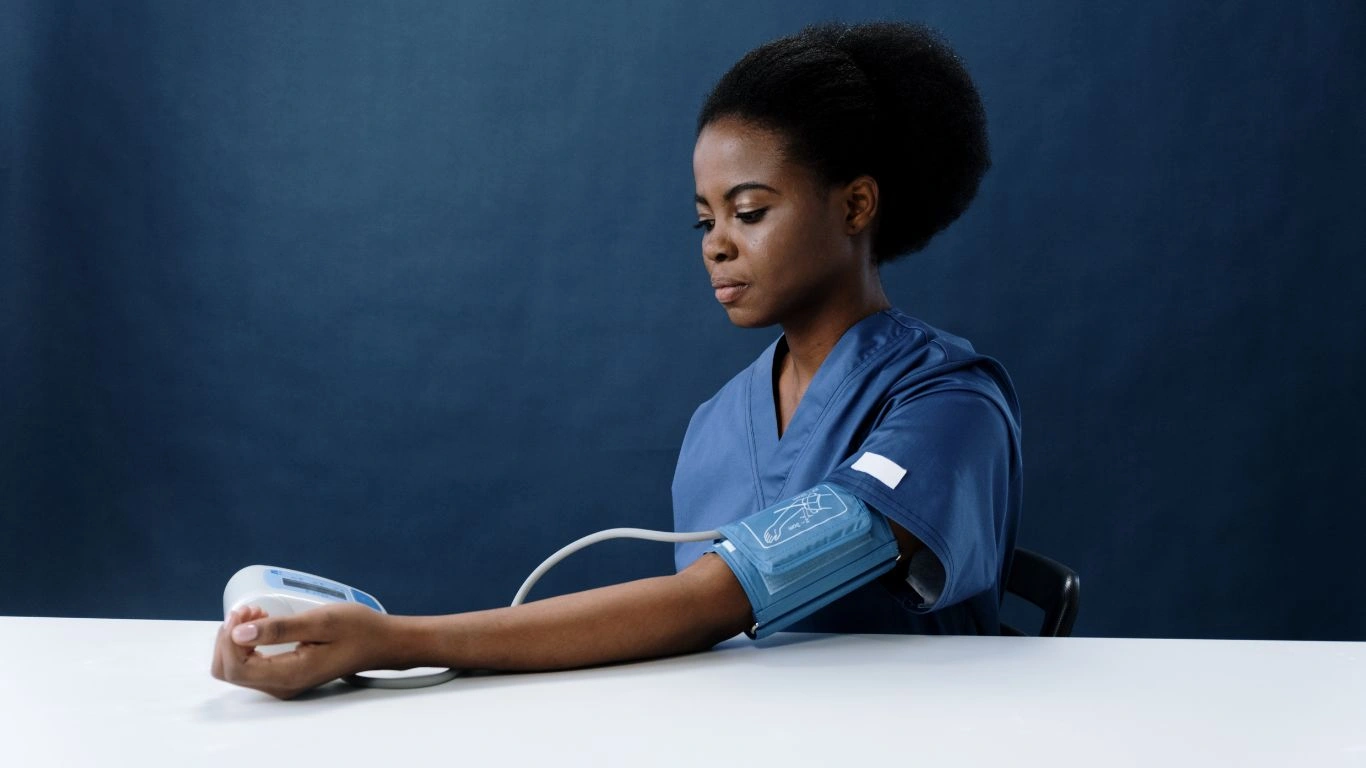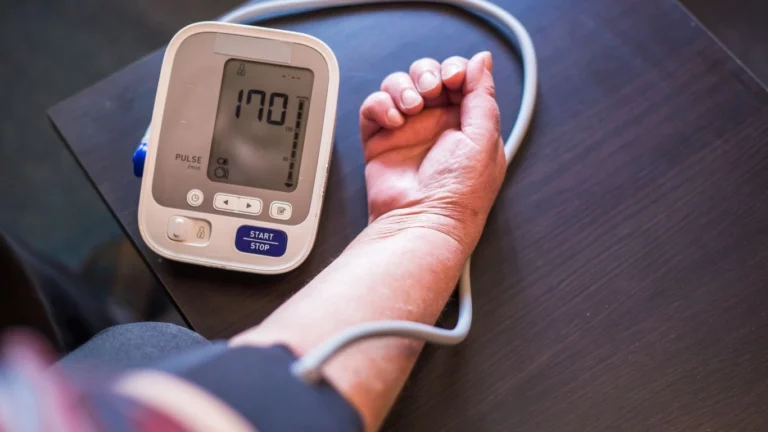Best Yoga Poses for Hypertension – A Guide to Lowering Blood Pressure Naturally
High blood pressure can be a serious issue, but the good news is that yoga can be a natural way to help manage it. Want to know which poses can bring you relief? We’ve got you covered with this guide on the best yoga poses for hypertension!
Hypertension, or high blood pressure, affects millions of people worldwide. It’s often called a “silent killer” because it doesn’t always show obvious symptoms, but it can lead to serious complications like heart disease and stroke. While medication plays a key role in managing hypertension, many people are now turning to holistic practices like yoga to help control their blood pressure levels naturally.
In this article, we’ll dive into the best yoga poses that have been shown to lower blood pressure. These poses are easy to incorporate into your daily routine and can have lasting benefits for both your body and mind.
Why Yoga Helps with Hypertension
Yoga is known for its ability to relax the body and mind, which is key when it comes to lowering blood pressure. By practicing yoga, you can reduce stress and promote better circulation, both of which play a role in maintaining healthy blood pressure levels. Plus, many yoga poses focus on deep breathing, which activates the parasympathetic nervous system (your body’s “rest and digest” system), helping to lower heart rate and blood pressure.
Research has shown that regular yoga practice can lead to a reduction in both systolic and diastolic blood pressure. It’s not a one-time fix, though—consistency is key. But don’t worry, you don’t have to be a yoga expert to see the benefits. Let’s talk about some beginner-friendly poses that can help lower your blood pressure.

The Best Yoga Poses for Hypertension
These poses are specifically chosen because they encourage relaxation and circulation, which are essential for lowering blood pressure. Try adding them to your practice a few times a week for the best results.
1. Child’s Pose (Balasana)
Child’s pose is a deeply restorative posture that helps calm the nervous system. It encourages slow, deep breathing and promotes relaxation. In this pose, you’ll gently stretch your back, hips, and thighs, which can release tension in areas of the body that tend to hold stress.
How to do it:
- Start on your hands and knees, with your knees spread wide apart.
- Sit back on your heels and bring your forehead to the floor.
- Extend your arms forward, or let them rest by your sides.
- Breathe deeply and hold the position for 1–3 minutes.
Child’s pose is perfect for lowering your stress levels and helping you feel grounded.

2. Legs Up the Wall Pose (Viparita Karani)
This pose is great for calming the mind and improving circulation. By raising your legs against a wall, you help promote venous return (the return of blood to the heart) and reduce tension in your lower body. It’s especially helpful if you’ve been on your feet all day or dealing with stress.
How to do it:
- Sit with one hip against the wall, then lie down on your back and swing your legs up onto the wall.
- Keep your arms relaxed by your sides or place them on your belly.
- Close your eyes, focus on your breathing, and hold the position for 5–10 minutes.
This pose is great for winding down, and it’s especially useful before bedtime to help lower blood pressure and promote restful sleep.
3. Mountain Pose (Tadasana)
Mountain pose is a foundational yoga pose that can help improve posture and increase awareness of your breath. It’s simple, but when done with full attention, it can activate your whole body and improve circulation.
How to do it:
- Stand with your feet together, arms by your sides.
- Engage your thighs, lift your chest, and reach the crown of your head toward the ceiling.
- Take deep, slow breaths in and out for 30 seconds to 1 minute.
Mountain pose is all about building body awareness and alignment, which can reduce physical tension and contribute to lower blood pressure.
4. Seated Forward Bend (Paschimottanasana)
This pose stretches the entire back and helps calm the nervous system, making it an excellent choice for reducing blood pressure. The deep stretch in the hamstrings can also help release built-up tension in your lower body.
How to do it:
- Sit on the floor with your legs extended straight in front of you.
- Inhale and lengthen your spine. As you exhale, fold forward, bringing your chest toward your thighs.
- Hold the position for 30 seconds to 1 minute, breathing deeply.
Seated forward bend encourages relaxation and mindfulness, which can reduce the stress that contributes to high blood pressure.

5. Corpse Pose (Savasana)
Savasana is the ultimate relaxation pose and is often practiced at the end of a yoga session. It allows your body to fully relax, helping to lower stress and bring your blood pressure back to a normal range. Even though it’s simple, the benefits are huge.
How to do it:
- Lie flat on your back with your legs extended and arms by your sides, palms facing up.
- Close your eyes and focus on your breath, allowing your body to relax into the floor.
- Stay in this position for 5–10 minutes, breathing deeply and allowing any tension to melt away.
Savasana is a perfect way to end your practice, ensuring that your body is fully relaxed and your blood pressure stays in check.

Other Tips for Managing Hypertension with Yoga
While these poses are a great start, remember that yoga is more than just physical exercise—it’s a holistic practice. Incorporating mindfulness and breathwork into your routine can further support your efforts to lower blood pressure.
- Breathing exercises (Pranayama): Practice deep breathing techniques like diaphragmatic breathing or alternate nostril breathing to activate your parasympathetic nervous system and promote relaxation.
- Consistency is key: Yoga is most effective when practiced regularly. Aim for at least 3–5 sessions per week for noticeable improvements.
- Stay mindful: Pay attention to how your body feels in each pose, and avoid pushing yourself too hard. Yoga is about finding balance, not forcing yourself into difficult postures.
Conclusion
Yoga can be a powerful tool for managing hypertension, helping to lower blood pressure naturally through relaxation, stress reduction, and improved circulation. By incorporating these poses into your regular routine, you can support your overall heart health while also enjoying the many other benefits yoga offers.
Appendices
References
For more in-depth information about managing hypertension and the benefits of yoga, check out the following resources:
- Yoga and Hypertension: A Review of the Literature (2020). National Institutes of Health (NIH).
- How Lifestyle Changes Help Control Hypertension. Healthline (2021).
- Yoga Journal: Poses and Practice Tips
FAQs
- Can yoga really lower blood pressure? Yes! Regular yoga practice can help lower blood pressure by reducing stress, improving circulation, and promoting relaxation.
- How often should I practice yoga to see results? Aim for 3-5 yoga sessions per week to experience noticeable benefits for your blood pressure.
- Do I need to be flexible to practice yoga for hypertension? Not at all! You don’t need to be flexible to practice yoga. Start with beginner poses and progress at your own pace.
- Are there any yoga poses I should avoid with hypertension? Poses that involve extreme inversions or holding your breath might not be ideal for those with hypertension. Always listen to your body and modify poses as needed.
- Can I combine yoga with other treatments for hypertension? Absolutely! Yoga can complement traditional treatments for hypertension, but always consult your healthcare provider for personalized advice.
Disclaimer
The information provided in this article is for educational purposes only and should not replace professional medical advice. Always consult your healthcare provider before making any changes to your exercise routine, especially if you have hypertension or other health conditions.

Dr. Gwenna Aazee is a board-certified Internal Medicine Physician with a special focus on hypertension management, chronic disease prevention, and patient education. With years of experience in both clinical practice and medical writing, she’s passionate about turning evidence-based medicine into accessible, actionable advice. Through her work at Healthusias.com, Dr. Aazee empowers readers to take charge of their health with confidence and clarity. Off the clock, she enjoys deep dives into nutrition research, long walks with her rescue pup, and simplifying medical jargon one article at a time.






